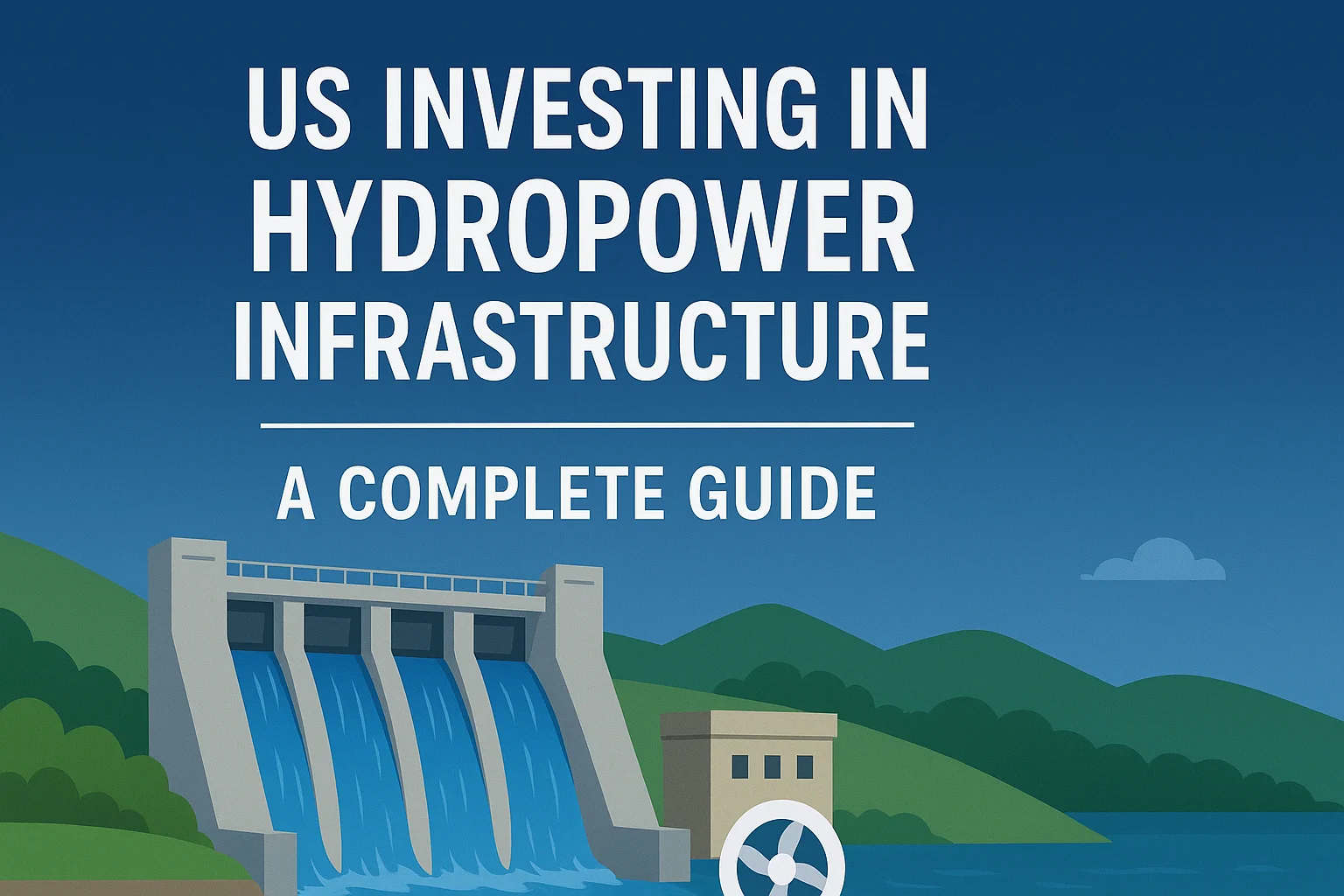Introduction
US investing in hydropower infrastructure is becoming a critical topic in today’s energy transition. With the growing demand for clean, renewable, and reliable energy sources, hydropower stands out as a key pillar in the nation’s strategy to reduce carbon emissions. Unlike solar or wind, hydropower provides consistent energy output, making it an essential part of the U.S. energy grid.
In this guide, we will explore the importance of hydropower projects, the benefits of US investment in hydropower, practical applications, best practices, and common questions people often ask about this form of renewable energy.
Benefits of US Investing in Hydropower Infrastructure
Hydropower is more than just electricity generation—it is about sustainability, economic growth, and energy security. Below are the primary benefits:
See also HELOC on Investment Property: A Complete Guide for Real Estate Investors
How It Helps in Renewable Energy Transition
- Clean Energy Production: Hydropower significantly reduces greenhouse gas emissions compared to fossil fuels.
- Reliable Power Supply: Unlike solar and wind, hydropower is not weather-dependent, making it a stable base-load power source.
- Water Resource Management: Dams and reservoirs used in hydropower projects also provide flood control, irrigation, and recreational opportunities.
- Long-Term Energy Security: By investing in hydropower, the US ensures a consistent, domestically generated power source.
Key Advantages for the US Economy and Communities
- Job Creation: Large infrastructure projects create employment opportunities in engineering, construction, and maintenance.
- Rural Development: Hydropower projects often benefit rural areas by providing electricity access and economic upliftment.
- Lower Energy Costs: Once built, hydropower plants offer lower operational costs compared to fossil fuel plants.
- Energy Independence: Reduced reliance on imported fuels strengthens the US energy sector.
How to Use/Apply US Investing in Hydropower Infrastructure
Investing in hydropower infrastructure requires planning, funding, and proper execution. Whether it’s through government initiatives, private sector participation, or public-private partnerships, the process follows certain steps.
Step-by-Step Guide
- Feasibility Studies: Assess potential sites, river flows, and environmental impact.
- Funding Allocation: Secure investments from federal funds, private investors, or clean energy grants.
- Design & Construction: Build dams, reservoirs, turbines, and power stations.
- Integration into the Grid: Ensure hydropower facilities are connected to national and regional power grids.
- Operation & Maintenance: Monitor efficiency, ensure water flow management, and maintain turbines.
- Policy Support: Leverage incentives such as tax credits and renewable energy subsidies.
Common Mistakes to Avoid
- Ignoring Environmental Concerns: Poorly designed projects can disrupt ecosystems and displace communities.
- Underestimating Costs: Large-scale hydropower requires substantial investment and long construction timelines.
- Neglecting Local Communities: Lack of community involvement may lead to opposition.
- Overlooking Modernization: Many existing dams in the US need upgrades to improve efficiency and safety.
Best Practices for US Investing in Hydropower Infrastructure
To maximize the impact of hydropower investments, the US needs to follow sustainable and efficient practices.
Tips & Tricks for Better Results
- Modernize Existing Facilities: Upgrading old dams can generate more power without new construction.
- Focus on Small-Scale Hydropower: Smaller projects can provide localized clean energy with lower environmental impact.
- Diversify Energy Mix: Combine hydropower with solar, wind, and geothermal for a balanced renewable portfolio.
- Encourage Public-Private Partnerships: Collaborative investments speed up project execution and reduce risks.
Expert Recommendations
- Prioritize Environmental Safeguards: Maintain aquatic habitats and fish populations through eco-friendly designs.
- Leverage Technology: Use digital monitoring systems for efficient water flow and turbine performance.
- Strengthen Policy Support: Expand renewable energy tax credits and funding for green infrastructure.
- Promote Regional Cooperation: Hydropower projects across states can enhance grid stability and efficiency.
FAQs About US Investing in Hydropower Infrastructure
1. Why is the US investing more in hydropower?
The US is focusing on hydropower because it is a clean, renewable, and reliable energy source that complements other renewables like wind and solar.
2. What are the challenges of hydropower investment?
Challenges include high upfront costs, long construction timelines, and environmental concerns such as fish migration and river ecosystem disruption.
3. How much hydropower does the US currently produce?
Hydropower contributes around 6–7% of total electricity generation in the US, but modernization could increase this share.
4. Can hydropower help with climate change?
Yes. Hydropower reduces dependence on fossil fuels and lowers carbon emissions, making it a crucial tool in the fight against climate change.
5. What role does technology play in hydropower projects?
New technologies such as fish-friendly turbines, AI monitoring, and smart grid integration make hydropower more sustainable and efficient.
Conclusion
US investing in hydropower infrastructure is a forward-looking approach that supports renewable energy, strengthens the economy, and provides long-term sustainability. While challenges exist, proper planning, modernization, and policy support can unlock the full potential of hydropower.
Hydropower will remain a key part of America’s clean energy transition, offering benefits for both communities and industries. If the US continues to invest wisely, hydropower could play a defining role in securing a greener future.
Call to Action: Stay updated on hydropower projects in your state, support clean energy initiatives, and explore ways to participate in sustainable energy programs.


